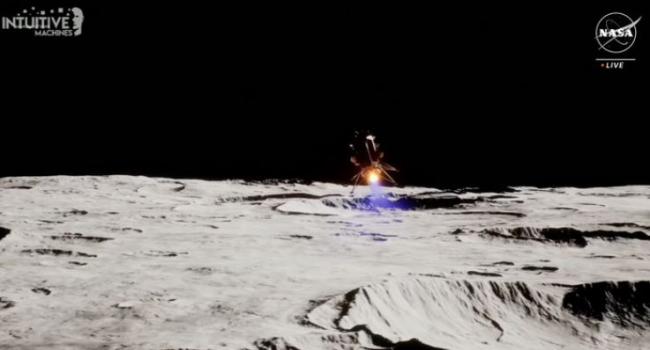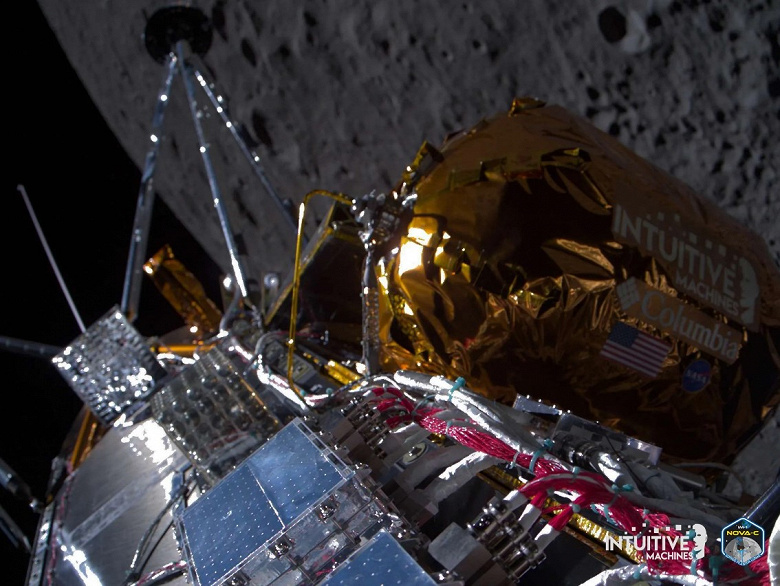
First lunar module owned by private company lands on Мoon: What is its mission?
The robotic spacecraft of Intuitive Machines has successfully reached the surface of the Moon, becoming the first private space vehicle to land on its surface. This achievement also marks the first American spacecraft to touch the lunar surface in the last fifty years since the completion of the Apollo 17 mission in December 1972.
The landing module, named Odysseus, touched down in the southern polar region of the Moon at 18:23 Eastern Time as part of the IM-1 mission. Approximately 15 minutes after the landing, controllers confirmed the receipt of a signal from the landing module.
Intuitive Machines delayed the descent by two hours to perform an additional orbit around the Moon. The company discovered that the laser rangefinders, used for precise landing, were not functioning correctly. As a solution, controllers loaded a software correction, allowing the landing module to use NASA's Doppler lidar as an alternative. Initially, this lidar was intended for technology demonstrations.
The private spacecraft's landing on the Moon marks the first of its kind in the history of lunar exploration by private companies.

As part of the IM-1 mission, Intuitive Machines placed six useful payloads from NASA on the landing module, aimed at demonstrating various technologies. These payloads include a navigation Doppler lidar, a navigation beacon, a radio frequency fuel level sensor, and a camera to study the regolith plumes raised by the landing module's engine. Other useful payloads include a laser retroreflector and a radio astronomical instrument.
Additionally, onboard the Odysseus landing module are six useful payloads from various organizations and companies. Columbia Sportswear provided material to test the insulation of the fuel tank. Galactic Legacy Labs and Lonestar Data Holdings placed data archives on the landing module. Two small astronomical cameras from the International Association of Lunar Observatories are also installed on the module. Artist Jeff Koons contributed an artwork titled Phases of the Moon.
Another instrument on the module, developed by non-NASA entities, is the EagleCam, a camera designed by students from Embry-Riddle Aeronautical University. EagleCam is designed to be catapulted from the module during descent and capture images of this event.

- Related News
- Wheel of Death: new method will help astronauts stay fit in low gravity
- Due to anomalies of Orion spacecraft, lunar exploration program may be delayed for years։ NASA
- TAO Observatory: World's highest telescope to study evolution of galaxies and exoplanets
- Powerful M9.5 solar flare causes radio blackout in Pacific Ocean
- What will happen to the Earth if the Moon disappears?
- Key to conquering the Red Planet: Why is NASA studying solar storms on Mars?
- Most read
month
week
day
- Digital Julfa Network is launching a pan-Armenian centre in the metaverse, on the Fastexverse virtual platform 919
- Xiaomi unveils exclusive Redmi Note 13 Pro+ dedicated to Messi and Argentina national team 805
- Sparkles: Boston Dynamics unveils a furry robot dog that can dance (video) 798
- Is there a ninth planet in the solar system? Scientists find new evidence 675
- Smartphone catches fire in child's hand in Russia 657
- What will happen to the Earth if the Moon disappears? 653
- How to understand how protected a smartphone is from water and dust? 638
- World's largest 3D printer was created in USL It prints 29 meter-long structures 622
- iPhone 16 may get colored matte glass back panel, 7 colors 613
- New iPad Pro to receive M4 chip and to be more powerful than Apple computers 612
- Archive
